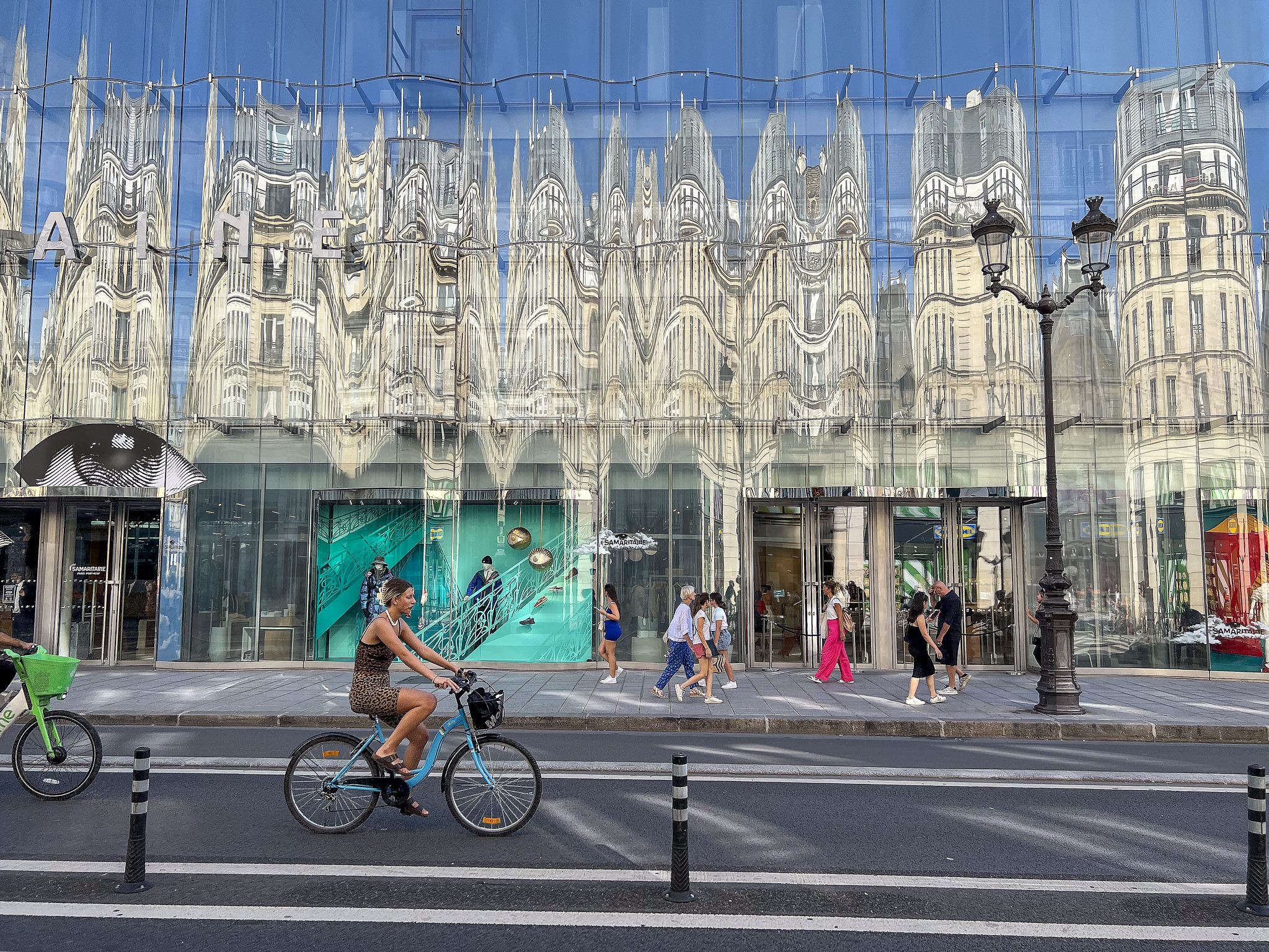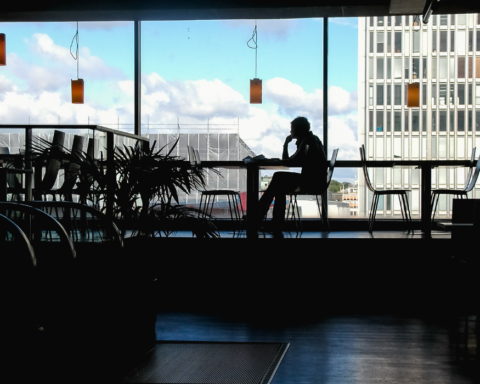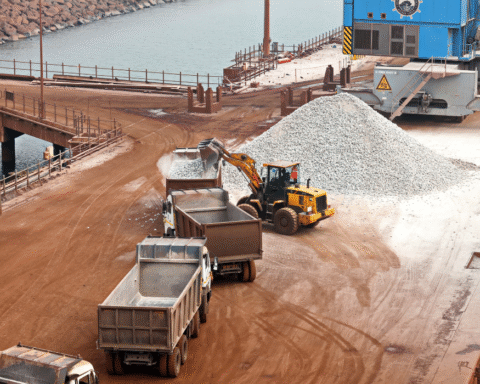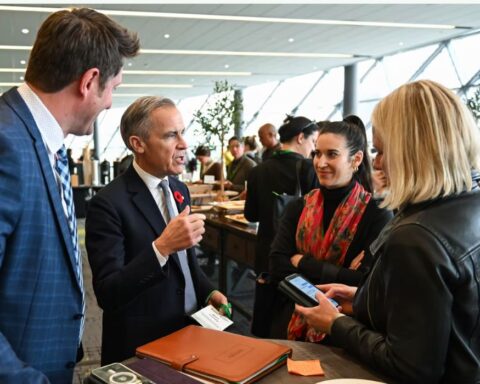As the world’s top athletes gather in Paris, the Olympic motto of “Higher, Faster, Stronger” could use one more superlative: “Cleaner.” If there were a gold medal for the Herculean task of improving the health and livability of a city, it would go to Paris itself – and tenacious mayor Anne Hidalgo – for an audacious decades-long green revolution based on the conviction that cities belong to people, not to cars.
Olympic visitors will find Paris physically changed, and all the better for it. Crowded, dirty expressways along the Seine River have been “pedestrianized” into leafy walkways and picnic areas. The cacophonous Grand Boulevards with their eight lanes of traffic have been tamed, turned into two- or four-lane arterial roads flanked by bicycle lanes, grassy verges and widened sidewalks with more room for strollers, buskers and outdoor café seating. The speed limit on some streets is now just 30 kilometres per hour. Meanwhile, flowers and trees are flourishing in former parking spaces, while some streets, such as the fashion district’s Rue de Rivoli, are now entirely car-free. And according to Paris’s maison de ville, air pollution is down 40% over the past 10 years.
Having lived in Paris for six months in the 1980s, and again for a month this spring, I was surprised and delighted by the city’s transformation. In my old neighbourhood in the 11th arrondissement, you can now sit in a deck chair on the Place de la Bastille sipping an aperitif instead of dodging six lanes of traffic endlessly circling the July Column that celebrates three successive people’s revolutions. There is space to sit, reflect and breathe.
Planning professor Nicholas Klein of Cornell University recently told NBC News he expects many other cities to adopt policies similar to Paris’s, “because many of these measures have been really successful.”
Hidalgo, who was born in southern Spain and became Paris’s first woman mayor in 2014, likes to put her green revolution in historic context. “This takes us back to ancient times, when the river was the source of the city,” she reports in her book Breathing (Respirer). “Paris is building the city of tomorrow on the foundations of its history.”
In fact, she argues, the history of Paris is founded in bad planning. Paris’s narrow, overcrowded streets enabled the assassination of one of France’s favourite kings, Henry the Great, when his coach got stuck in traffic in 1610. A 19th-century writer called central Paris “an immense workshop of putrefaction, where poverty, plague and disease work in concert, where air and sun hardly penetrate.” It took Baron Haussmann, the powerful prefect of Paris in the 1850s, to raze 12,000 dilapidated buildings and replace them with the Second Empire architecture and Grand Boulevards for which Paris is now known – while modernizing the town’s fountains, viaducts and sewers and displacing 25,000 people in the process.
In Breathing, an edited version of an address she gave to the European Commission in 2018, Hidalgo says her work is rooted in concern for people – and returning to a more classic version of community. “When we give citizens the opportunities to remake their city, they make it softer, greener,” she writes. “So now we share space more fairly. The car is not necessarily completely excluded, but it is put back in its rightful place – the one that allows Parisian life to take off.”
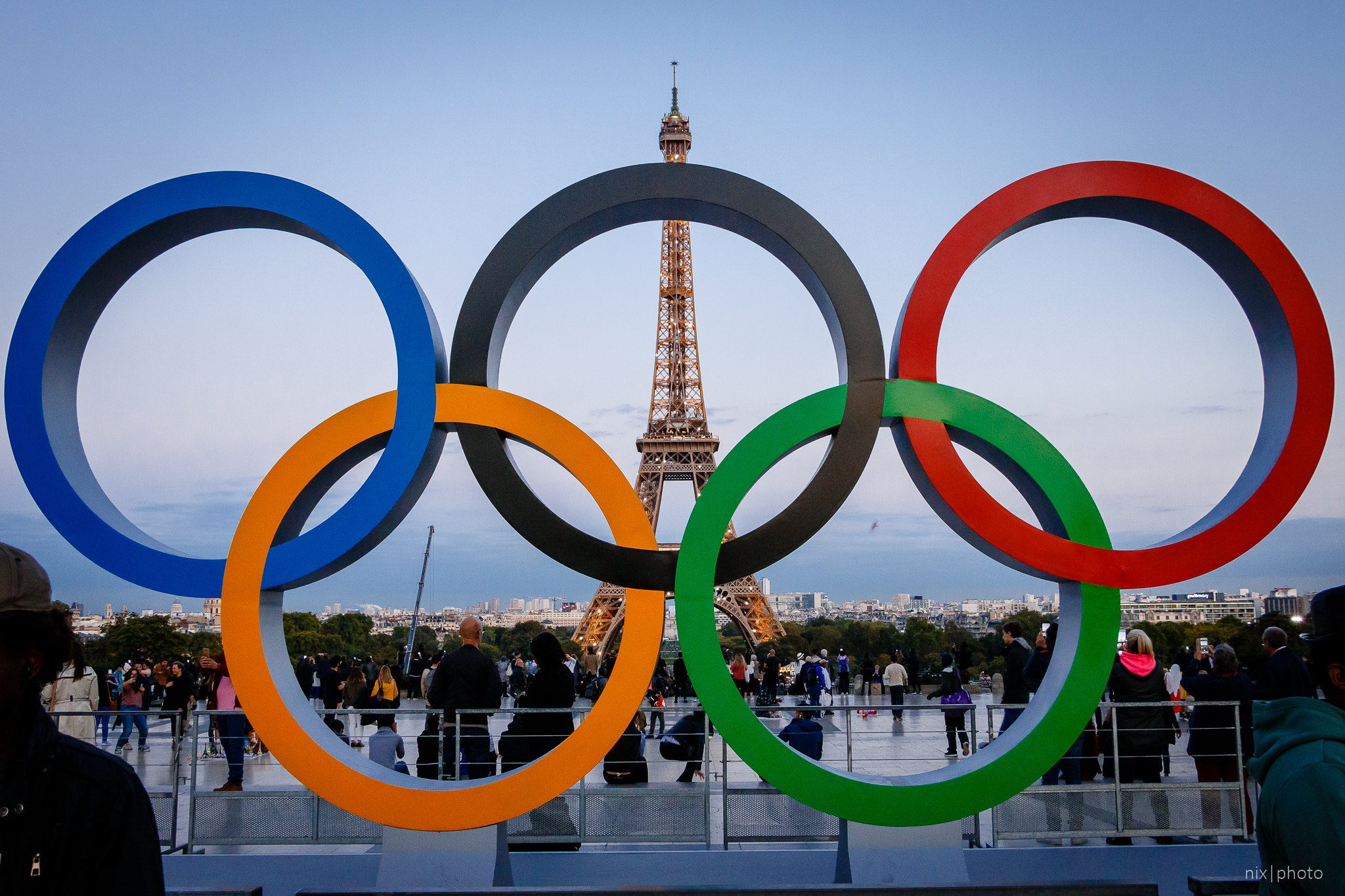
Paris’s transformation has been quick, but certainly not painless. Hidalgo has had to fight the motor-vehicle industry, the European Union, numerous appeals and the hostility of motorists who consider it their right to drive anywhere they like. She’s won most of her battles by thinking big, building alliances – especially with other big-city mayors – and testing new concepts with temporary initiatives, such as restricting vehicle access on Sundays, that she hopes to make permanent.
Mostly, though, Hidalgo is driven by an intense concern for her residents’ well-being. Unlike many politicians, she bases policy on her firm conviction that vehicle pollution – especially from diesel engines, which account for 40% of fine-particle emissions – costs lives, not just through bad air but, increasingly, extreme heat. Indeed, a 2016 study by French health agency Santé Publique France found that nearly 48,000 people were dying in Paris every year from causes related to air pollution. “We will not die tomorrow from pollution,” Hidalgo writes in Breathing. “We are dying from it today. It is already the third largest cause of death in France, after alcohol and tobacco.” Her mission: “I can’t fix what we’ve already done, but I can do what we haven’t done yet.”
From the river to the streets
Step one in the greening of Paris came in 2001 with Paris Plages, a municipal initiative to transform parts of the riverbank into palm-tree-studded activity zones, for lounging and sports (albeit no swimming in the polluted Seine). Critics made fun of the effort, but Hidalgo, who was deputy mayor at the time, recalls it as “a first step in the reconquest of the riverbank streets.” In 2007, Paris invested €150 million in the world’s first self-serve bike-share project to get motorists out of their cars.
As mayor, Hidalgo created more than 550 kilometres of bicycle lanes, eliminated 50,000 parking spaces, and announced plans to phase out diesel vehicles year by year, starting with the oldest and most toxic vehicles, to achieve a full ban by 2025. The goal: to reduce transport-related emissions by 60%. She also turned the north-bank expressway into a pedestrian zone. A coalition of motorists’ groups and suburban voters opposed the closure, claiming the city had supplied inaccurate evidence about its impact on pollution and traffic reduction. Hidalgo’s team finally got the win by repositioning the action as a heritage conservation project.
RELATED:
- Women lead the world’s most sustainable cities
- Can France get past its GHG-rich love of dairy and diesel to be a climate leader?
- As paralympics heat up, COVID-19 is not Tokyo 2020’s biggest health risk
In 2018, Paris, Brussels and Madrid went to a European Union court to defend cities’ right to impose high emissions standards for vehicles on their streets. It was the era of Dieselgate, the scandal in which Volkswagen AG was found to have deliberately misstated its vehicles’ emissions statistics. Hidalgo charged national and European authorities with offering automakers “a licence to pollute,” accusing them of prioritizing the financial health of automakers over the health of their citizens. In December 2018, the court ruled in the cities’ favour.
Meanwhile, Hidalgo also pushed to host the 2024 Olympics (after a previous bid for the 2012 Games failed), sealing the deal by promising a community-based, eco-friendly event. On July 17, she made headlines when she led a group of about 100 officials, athletes and local people to go swimming in the Seine, following a billion-dollar cleanup that qualified the river to become an official venue for Olympic swimming events. As a future project, Hidalgo hopes to have the Seine recognized as a legal person – as some rivers around the world have already been certified, including Quebec’s Magpie River – to enable legal action to be taken against polluters.
Unfinished business
Much of Hidalgo’s work is still unfinished. In 2018, she began pushing for free public transport in Paris and its suburbs. It remains a controversial proposal.
Two years later, Hidalgo focused her re-election bid on the concept of the 15-minute city: creating urban neighbourhoods where virtually everything you need – places of employment, schools, shops and recreation – are no more than a 15-minute walk away. Critics complained of social engineering, but she was elected with 48.5% of the ballots cast. With that vote of confidence, Hidalgo embarked on another initiative: inviting residents to turn half of Paris’s remaining parking spaces into parks and vegetable gardens.
The Hidalgo revolution has been furthered by two recent issues in which she turned to referendums for support. In 2023, Parisians voted to ban electric scooters from the city’s streets – a once-promising green solution that worked only rarely and mainly resulted in tripping hazards. And in February, Parisians approved a tripling of parking rates for sport-utility vehicles, buying Hidalgo’s argument that SUVs should pay more because they take up more space than traditional “city cars.” Under the new scheme, cars weighing 1.6 tonnes or more will pay €18 (about $27) an hour in inner Paris. Hidalgo hopes that carmakers will get the message.
What can North American cities learn from the greening of Paris? That courageous leadership, clearly focused on the health and lifestyle benefits, can find support for actions to reduce the urban dominance of cars, highways and parking lots. Of course, Paris has one big advantage over most cities: one of the world’s densest metro systems, with 16 lines, 246 kilometres of track and 320 stations – as well as local and regional bus services. It will be hard to lure most North Americans out of their cars until they have rapid transit close by.
But even then, Paris is taking nothing for granted. It has four more subway lines under construction, it’s building more tramways and investing more than $60 billion in a regional transit system that will connect the surrounding suburbs – and save a lot of unnecessary trips downtown.
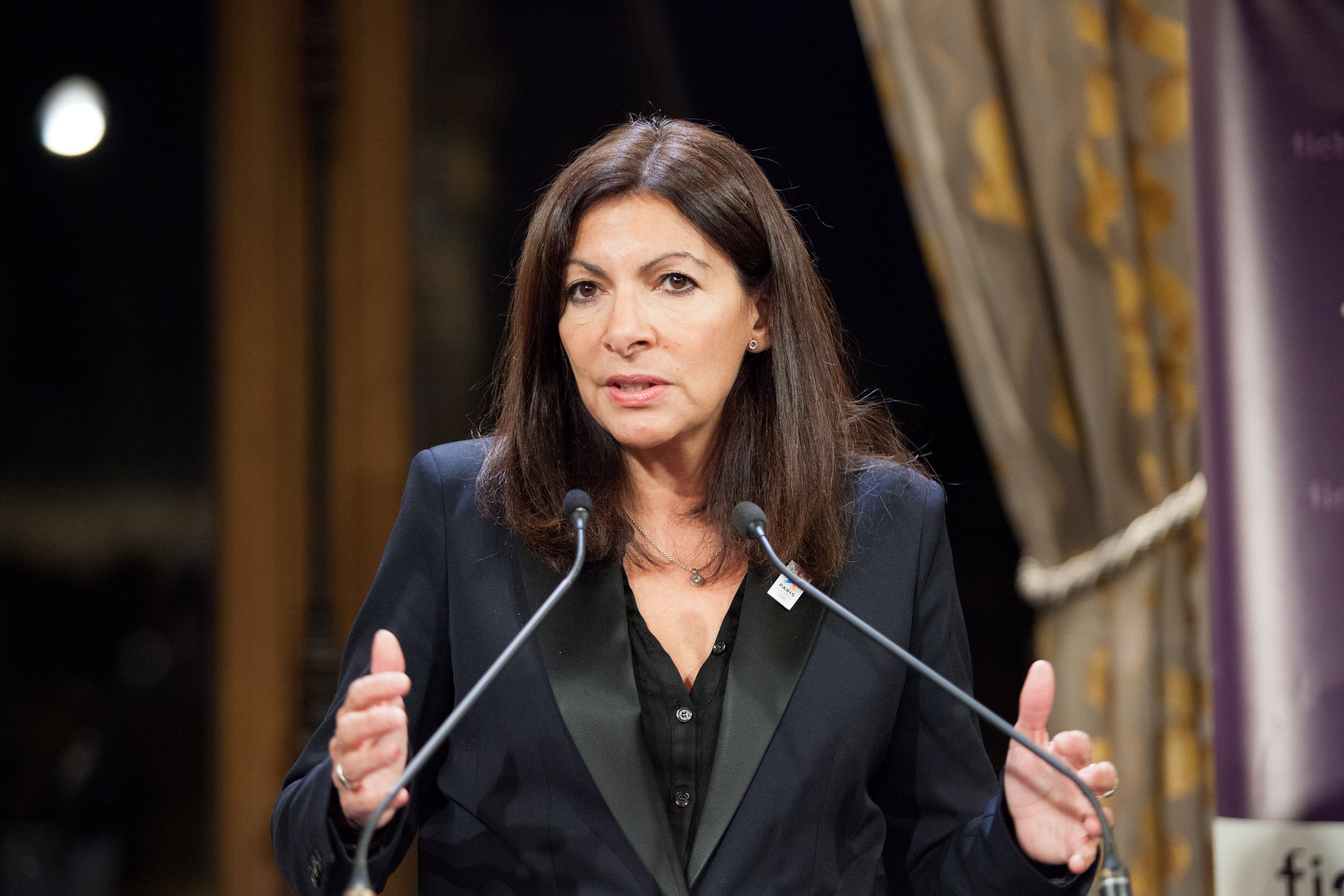
Just ahead of the opening ceremonies, the Paris Olympics look to be living up to Hidalgo’s commitment to be the greenest Games in history. The Games will have the smallest physical footprint in decades, reducing travel needs, with all sites connected by a 60-kilometre cycling network. (There will, of course, be zilch parking available.) Given the high emissions that accompany demolition and construction, only two new permanent buildings were constructed for these Games: an aquatics centre and an arena for badminton and rhythmic gymnastics. Many events will take place in temporary, no-frills stadiums located in parks and public spaces, such as the Place de la Concorde.
All venues have been connected to the electrical grid to eliminate diesel generators, and food services will focus on other plant-based menus. The organizers’ goal is to limit the Games to a carbon footprint just half the size of that of London 2012, which totalled 3.3 million tonnes of carbon dioxide.
Furnishings for the athletes’ village have been similarly greened, with furnishings made from recycled cardboard, bottletops and shuttlecocks. But the road to sustainability is never easy. Athletes arriving in Paris earlier this month rejected Hidalgo’s decision to use geothermal cooling in their quarters. Organizers compromised by allowing teams to order portable air-conditioning units – at their own expense.
Philanthropist Michael Bloomberg, former mayor of New York City, has collaborated with Hidalgo on many projects. As part of a recent profile of Hidalgo in Vogue magazine, he noted that “change is always hard, and it often takes a while for the public to come around . . . [Hidalgo] never shies away from doing the right thing, even if it’s unpopular.”


